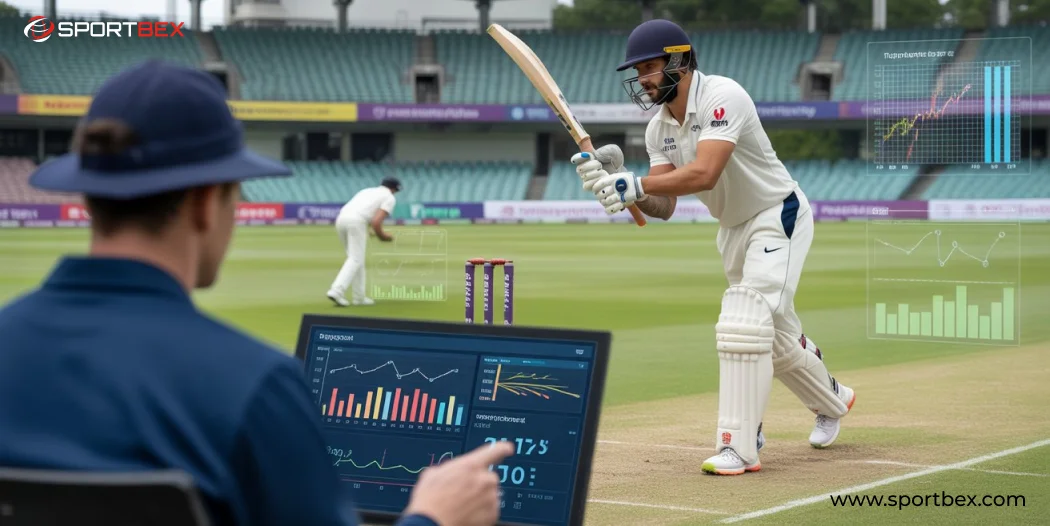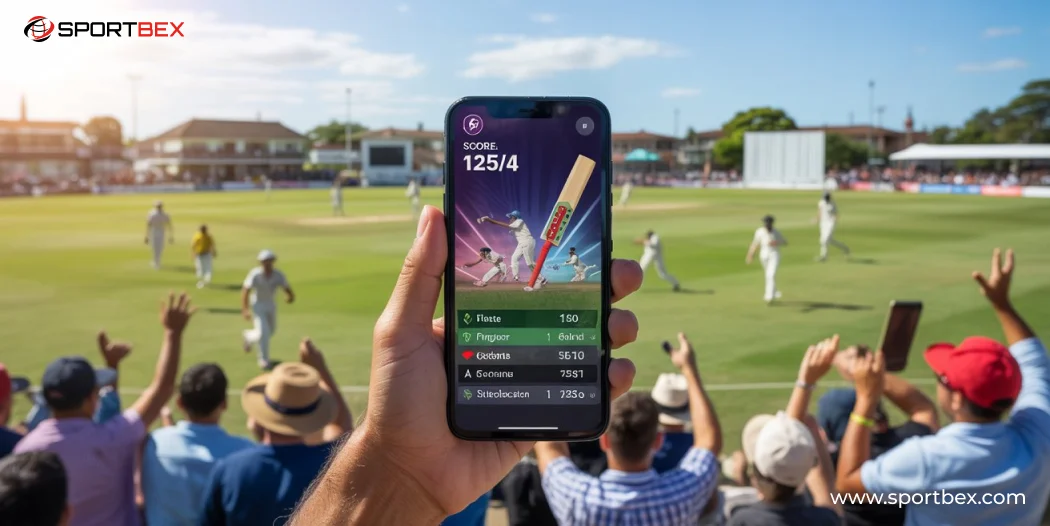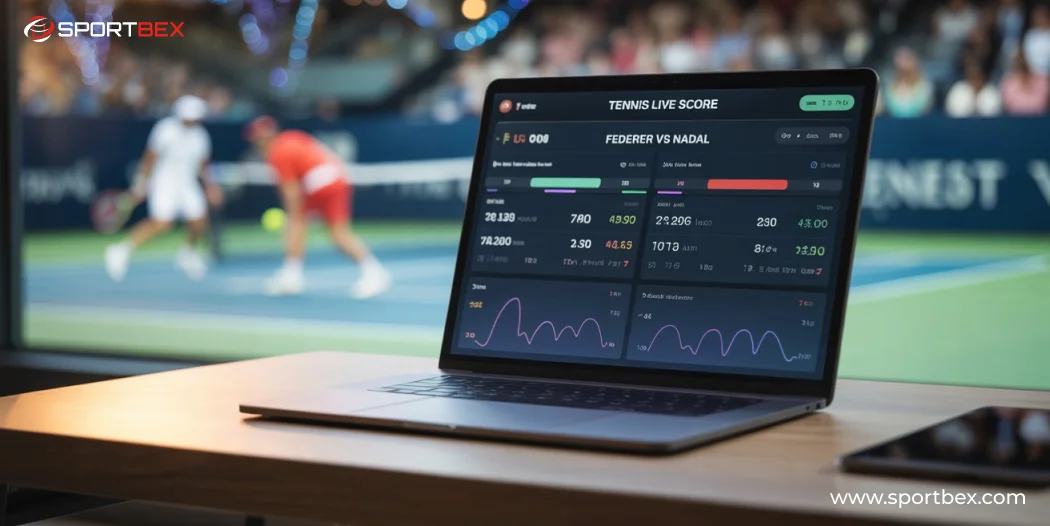Cricket is no longer just about hitting the ball or taking wickets. Today, improving player performance relies on data, metrics, and technology.
Cricket performance analysis helps players and teams understand what they’re doing well, where they can improve, and how to get better. Analysts study batting, bowling, fielding, and fitness using different tools and techniques to enhance performance.
In this blog on Cricket Performance Analysis for Maximum Player Potential, we’ll break down how cricket performance analysis works, explore the key tools and stats used, examine the challenges involved, and discuss what the future holds for cricket performance tracking.
Understanding Cricket Performance Analysis
Cricket performance analysis is all about understanding how players and teams perform. It looks at their skills, strategies, and overall effectiveness.
By collecting and studying data, it gives useful tips to players, coaches, and managers. It’s not just about basic stats anymore; it also focuses on player movements, techniques, and how they make decisions under pressure.
A cricket analyst works with coaches to turn complicated data into simple strategies. This helps teams plan for matches, spot weaknesses in their opponents, and improve their own game.
By looking at everything from how the ball moves to where fielders are placed, analysts get a complete picture of how both individual players and the whole team are performing.
Key Metrics Used in Cricket Performance Analysis
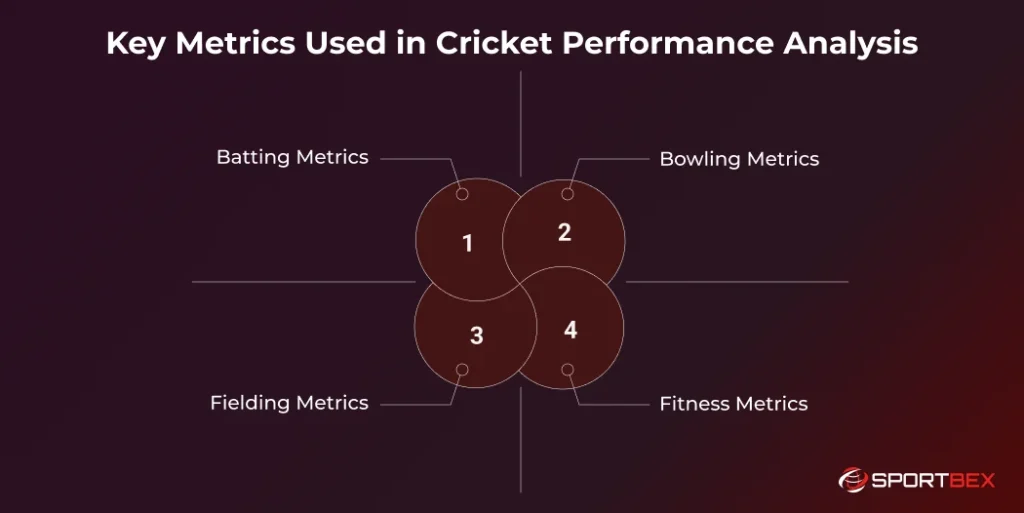
Understanding key metrics is essential to unlock player potential. Covering batting, bowling, fielding, and fitness, these metrics provide a full view of performance.
Batting Metrics
Batting plays a central role in cricket analysis, with key metrics including strike rate, batting average, runs scored, and consistency, helping evaluate a player’s performance and contribution to the game.
- Strike Rate: Shows how quickly a batsman scores runs. A high strike rate is important in shorter cricket matches.
- Average: Tracks consistency over matches.
- Boundary Percentage: This tells us how often a player hits those fantastic fours and sixes!
- Dismissal Patterns: Helps find areas to improve when facing certain types of bowlers.
- Batting Impact Score: Looks at runs, strike rate, and match situation to measure a player’s impact.
Cricket analysis software lets analysts break down every shot, assessing footwork, timing, and shot selection. These insights are invaluable for coaching.
Bowling Metrics
Bowling analysis emphasizes efficiency, accuracy, and strategy. It evaluates performance, identifies improvement areas, and ensures bowlers execute plans effectively to achieve optimal results in matches or training sessions.
- Economy Rate: Measures how many runs a bowler gives away per over.
- Strike Rate: This measures how often a bowler takes a wicket.
- Dot Ball Percentage: Percentage of balls bowled without conceding runs.
- Line and Length Consistency: This evaluates how well a bowler can consistently hit those perfect spots on the pitch, making it super tough for batters!
- Bowling Impact Score: Evaluates a player’s contribution across various match situations, considering their performance and impact in different contexts within the game.
High-speed cameras and ball-tracking technology create amazing visuals that show us exactly how the ball spins, moves, and how fast it’s going. This helps cricket analysts break down a bowler’s technique and find ways to make it even better.
Fielding Metrics
Fielding is absolutely crucial in cricket; it can totally make or break a game! We’re talking about those incredible dives, lightning-fast throws, and sharp catches that swing momentum. Here are the key metrics we look at:
- Catch Success Rate: Ratio of successful catches to opportunities.
- Run-Out Efficiency: How quickly and accurately a player can pull off a run-out.
- Ground Coverage: Analysis of cricket movement focuses on evaluating a player’s agility and positioning on the field.
- Throw Accuracy and Speed: Measures fielding effectiveness.
- Cricket performance analysis ensures fielders are placed strategically, based on opponent tendencies and player capabilities.
Fitness Metrics
Modern cricket demands exceptional fitness, focusing on agility, endurance, and strength. Key metrics include speed, stamina, reaction time, and recovery, ensuring players maintain peak performance on and off the field.
- Endurance Levels: Ability to maintain performance over extended periods.
- Speed and Agility: Crucial for both batsmen and fielders.
- Injury Risk Assessment: Uses historical data and biomechanical analysis.
- Recovery Rates: Monitors how quickly players recuperate between matches.
Combining fitness data with match stats helps cricket analysts create better training plans for top performance.
Tools and Technologies Used in Cricket Performance Analysis
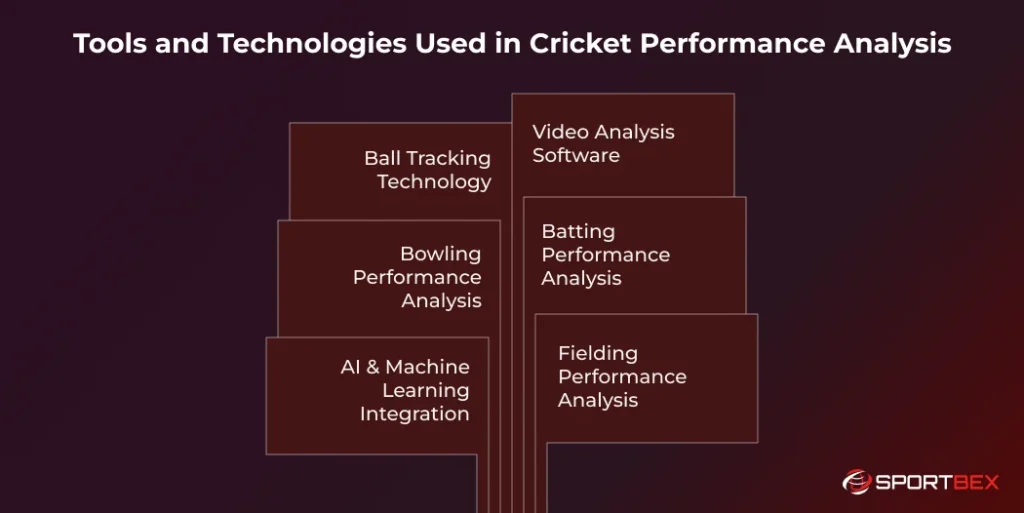
Technological advancements have transformed cricket performance analysis, enabling precision and depth previously unattainable.
1. Video Analysis Software
Video analysis is now essential in cricket. With the rise of Cricket Live Streaming, coaches and analysts can access real-time and recorded footage from multiple angles, allowing for deeper tactical assessments. High-quality footage helps examine player movements, batting, bowling, and fielding techniques. Cricket analysis software breaks down videos frame by frame, making it easier to evaluate players in detail.
2. Ball Tracking Technology
Ball tracking technology, famously exemplified by systems like Hawk-Eye, has revolutionized how we understand the game. This amazing tech offers real-time insights into a cricket ball’s entire journey, meticulously tracking its trajectory, speed, spin, and bounce. This data is crucial for:
- Refining bowling strategies.
- Understanding batting weaknesses.
- Supporting umpire decisions.
3. Batting Performance Analysis
Advanced metrics such as bat speed, shot timing, and impact zones are measured using sensors and motion tracking technology. These data points provide valuable insights into a batsman’s performance, helping them refine their technique and improve consistency.
4. Bowling Performance Analysis
Bowling analysis is more than just averages! Imagine discovering the perfect arm angle, seam position, and release point for every delivery. That’s what biomechanical sensors and video analysis help us do! This powerful data allows bowlers to fine-tune their technique, maximizing their wicket-taking potential and significantly reducing the risk of injuries.
5. Fielding Performance Analysis
Fielding plays a crucial role in cricket, often overlooked but vital to success. Modern cricket analysis software tracks player movements, including positioning, sprint speed, and agility, providing valuable insights. By quantifying these metrics, analysts can pinpoint areas for improvement, enhancing defensive efficiency.
6. AI & Machine Learning Integration
AI and machine learning are changing the game of cricket. They can predict how players will perform in certain conditions, analyze opposition strategies, and help teams pick the best players. By connecting with API Cricket, teams get real-time player stats and past data, making predictions even more accurate.
Challenges in Cricket Performance Analysis
Cricket analysis has made incredible strides with advanced technology, but challenges persist in evaluating performance effectively. The sheer volume of data generated during matches is overwhelming; a single game can produce thousands of data points. Making sense of this information demands sophisticated tools, such as Cricket API Integration, and expertise to extract actionable insights.
Contextual factors remain difficult to quantify when analyzing cricket performance. Identical deliveries can yield entirely different results depending on match situations, pitch conditions, or the mental state of players. Analysts must carefully balance statistical trends with qualitative observations to offer recommendations that truly reflect the complexities of the game.
Data quality and integration are major hurdles. Varying match conditions and venues make standardization difficult, and integrating live data, video analysis, and fitness tracking presents technical challenges. Plus, players constantly adapt their strategies, making historical data less predictive. So, successful analysis demands not only technical expertise but also a deep understanding of player psychology and the dynamic nature of the sport.
Future of Cricket Performance Analysis
The future of cricket performance analysis looks incredibly promising, with advancements paving the way for deeper insights into player techniques, strategies, and overall game dynamics.
- Enhanced AI Predictions: Machine learning will get even better at predicting how well a player will perform.
- Wearable Technology: Devices that track heart rate, tiredness, and body movement will become common.
- Virtual Reality Training:VR will simulate match scenarios, helping players practice decision-making under pressure.
- Advanced Data Visualizations: Interactive dashboards for Cricket Data Visualizations let teams explore metrics dynamically.
- Real-Time Insights: Continuous updates from Cricket Ball by Ball Live will allow coaches to make strategic in-game adjustments.
Conclusion
Cricket today is as much a science as it is a sport! Effective cricket performance analysis optimizes strategies, enhances player skills, and drives data-driven decisions for teams. With AI, ball tracking, and specialized cricket analysis software, analysts now dive deep into everything from cricket movement to batting and bowling metrics.
Teams seamlessly combine real-time insights with historical Cricket Player Stats and Cricket Team Stats, integrating via Cricket API. This tech-driven expertise maximizes every player’s potential across all levels. As cricket evolves, teams embracing advanced analysis will dominate the field, setting exciting new benchmarks in performance and strategy.
Ultimately, modern analysis quantifies and optimizes every decision, unlocking maximum potential for players and teams alike!
Frequently Asked Questions
Cricket performance analysis is the process of collecting and evaluating data related to a player's on-field actions such as batting technique, bowling speed, fielding efficiency, and decision-making. It helps coaches and analysts identify strengths, weaknesses, and tactical improvements.
Through accurate performance metrics, players receive insights on shot selection, running efficiency, fitness levels, and opposition patterns. These insights guide personalized training plans that boost development faster than traditional coaching alone.
Modern analytics uses video analysis tools, motion sensors, AI-based prediction models, smart wearables, biomechanical tracking, and advanced statistics platforms to capture real-time performance data.
Yes. By monitoring workload, stress patterns, body mechanics, and recovery cycles, analysts can prevent overtraining and highlight risky movements, reducing injury likelihood.
Players, coaches, team selectors, sports scientists, and even sports betting or fantasy platforms benefit from it. Each group uses performance data differently for training, selection, and competitive strategy.
Recent Blog
Live Ball-by-Ball Coverage of Local Cricket Action
October 27, 2025
 8 min
8 minHow to Access Real-Time Tennis Match Results Using an API
October 24, 2025
 8 min
8 min

